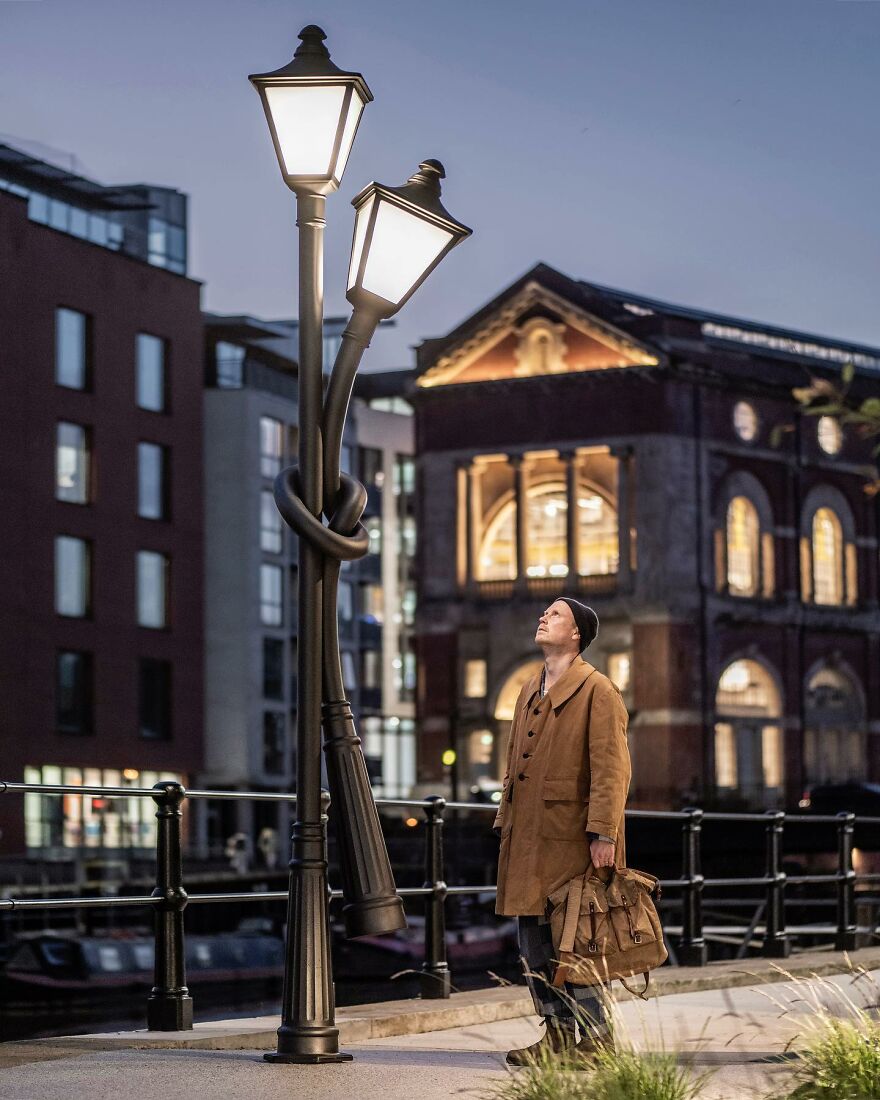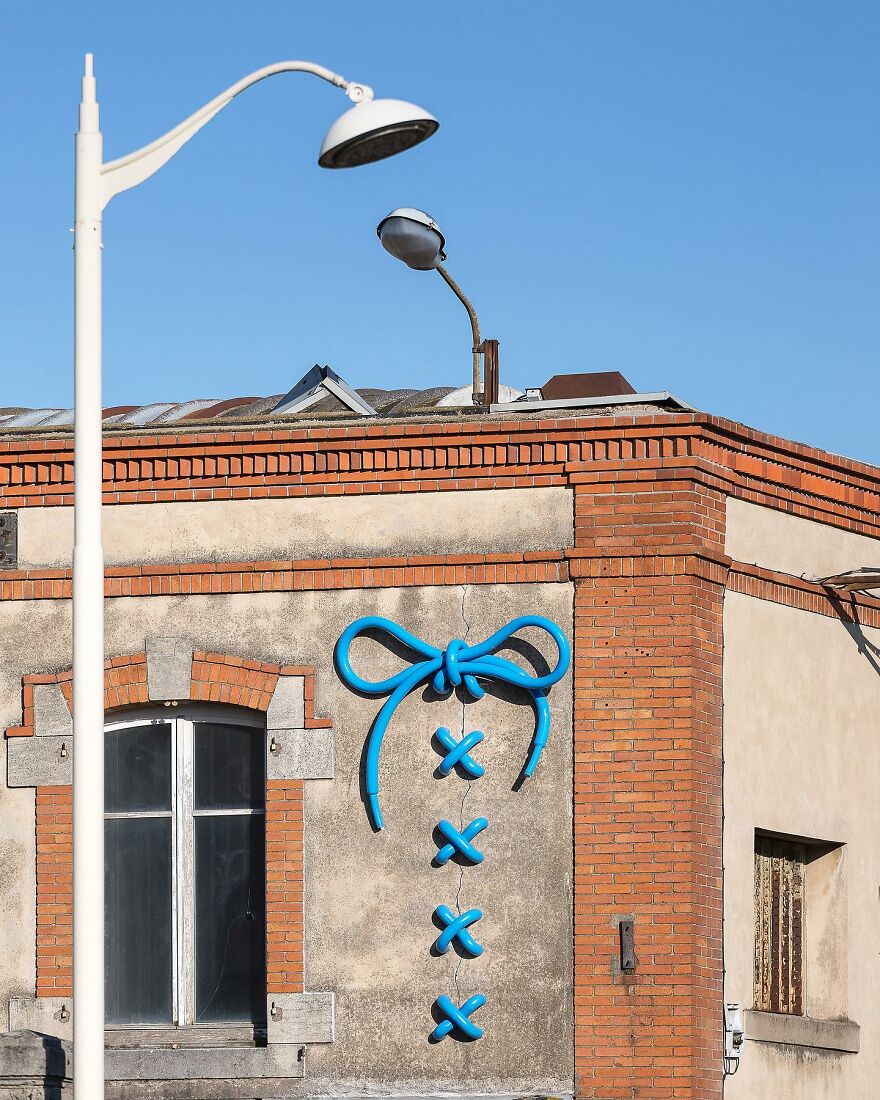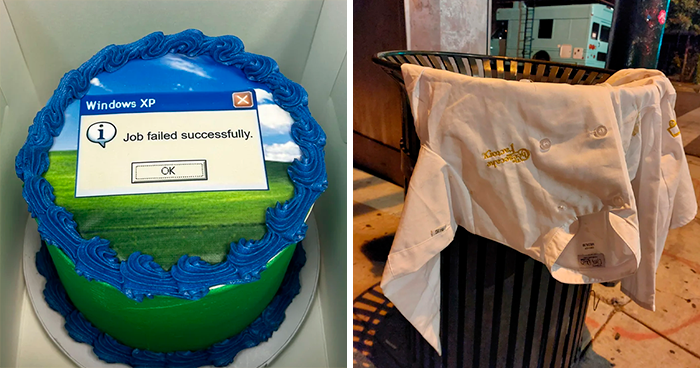
5Kviews
Urban Surrealism Featuring Mind-Bending Buildings By British Sculptor Alex Chinneck (21 New Pics)
Interview With ArtistAlex Chinneck is a British sculptor known for his striking and imaginative urban interventions that merge art, architecture, and engineering. With his most known creations like a melting house, a levitating mansion, and a 37-meter upside-down tower, Chinneck’s work transforms familiar urban landscapes into surreal, playful spectacles.
His approach challenges conventional boundaries, blending technical skill with theatrical design to create immersive, physically real experiences that captivate audiences. A graduate of Chelsea College of Art and a member of the Royal British Society of Sculptors, Chinneck has garnered international recognition, with his projects drawing millions of visitors worldwide and sparking curiosity and wonder in public spaces.
More info: alexchinneck.com | Instagram
This post may include affiliate links.
Given the chance, Bored Panda reached out to Alex with some questions about his work! Reflecting on how he selects locations for his installations, Chinneck explained, “My first public artworks were self-facilitated. I had an idea, for example, to create a sliding house and then I set about finding the right building and situation to realize it. In that case, it was a derelict building in the seaside town of Margate that was going through a major process of regeneration. The building was owned by the local council who had plans to demolish it and replace it with social housing, which created a window of opportunity for me to do something creative with it first. Since then, I’ve received invitations from museums, developers, brands, and festivals who are seeking artworks for particular sites, so often the setting is presented to me. In those cases, the creative process is reversed and it becomes about finding the right creative response to the context. The location plays a decisive role in the conception of my public artworks, and there is always an important relationship between the two. I try to create sculptural illusions that are born from and feel belonging to their setting. Contextual integration heightens their believability. You can always feel the difference between a public artwork that is considerately placed and one that is plonked.”
Alex's creative process begins with concept exploration and sketching, followed by an intricate collaboration with his long-time engineer, Simon Smith, and a skilled team of fabricators and collaborators. He shared, “The first step for me in any project is a period of concept exploration and sketching. We then develop the drawings into digital models that help me refine each design and communicate them to others. Then I call my engineer, Simon Smith. We have been collaborating for over a decade now and I place an enormous amount of trust in his judgment. Simon’s feedback typically informs the evolution of the massing of the sculpture and its materiality. Refinement continues for months while we submit planning applications, draft contracts, plan logistics, identify and collaborate with fabrication partners, and occasionally raise funds. My studio oversees the entire project, working very closely with a broad team of brilliant collaborators. The larger projects are 5% creative and 95% technical and administrative execution. We take long, complex, and at times stressful paths to reach playful and hopefully uplifting visual moments.”
When discussing memorable reactions to his work, Chinneck recalled an early piece and how it influenced his approach to accessibility in art. “One of my first sculptures was for my final show at Chelsea College of Art. I made an interactive, kinetic, minimalist sculpture called Donald and the Judds. I remember a child interacting with the sculpture and then starting to cry when her mother took her away. I thought that was an incredible reaction and I’ve since tried to integrate accessibility in my work. I like to make sculptures, particularly in the public realm, that can be visited, understood, and enjoyed by any onlooker irrespective of their age or background. Conceptual accessibility sometimes feels like a crime in the art world, but it feels important within my practice and comes naturally to me. My favorite reactions are when people don’t realize that I’m the artist responsible, which is often the case. Those responses, positive or negative, are refreshingly unedited and honest. The spectrum of responses when working in the public realm is so broad; I can't allow compliments or criticisms to inform my perception of each sculpture’s success. The right response to a setting isn’t always the approach that receives the most attention and celebration—some sculptures need time to bed in with people and place.”
Balancing the engineering challenges of his projects with his artistic vision is no small feat, as Alex admitted to us: “This is my constant battle. If the illusion that I’m seeking to create is going to work, then it has to look effortless. That almost always means hiding a tonne of engineering and technical complexity behind a seemingly simple sculptural form. You have to be prepared to fight for it and apply an obsessive level of focus to detail, quality, and execution. It’s one battle after another, but the greatest illusion in sculpture is that of ease.”
Ah! This picture makes a great deal more sense now! I saw this picture on a 'bad architecture' discussion. The focus was on the emergency exit stairs being not ft for purpose. Looking at the door, stairs, metal spirals and light through the lens of a sculpture, and suddenly things click into place.
On the idea of collaboration, Chinneck reflected, “My projects involve constant collaboration, with engineers, fabricators, photographers, filmmakers, commissioners, and communities. Despite that, it’s fair to say that I have quite a singular vision for my work and a strong creative identity. While my projects are highly collaborative, my art isn’t really, so I suppose I’m drawn to collaborate with practitioners from other disciplines. I’d really like to design an entire street, from the houses to the lamp posts, so I guess someone that could help facilitate that.”
As if they were tied up after use, to keep them in place :) Nice find
Interesting. However, seeing the same thing in multiple colours detracts from it. I felt the same regarding the 'here's an item, let's put a knot in it'. It left me feeling, "Next. I've seen this already." The first examples I saw were thought provoking. I especially like the building that appears to be melting.
Agreed. The ideas and execution are great, but we didn't need to see the same idea 3 or 4 times.
Load More Replies...I liked these. Yes, some works are pretty commercialized (artist need to eat too), but others are of a grand scale and add whimsy and interest. The wood work was very impressive to me.
I realy liked the devolving spiral staircase. If I ever have stupid money I'll have one of them in my house, somehow. Maybe I could use it as an excuse to build a three story round tower addition. All the best buildings have a tower. IMG_2455-6...e9269.jpeg 
Interesting. However, seeing the same thing in multiple colours detracts from it. I felt the same regarding the 'here's an item, let's put a knot in it'. It left me feeling, "Next. I've seen this already." The first examples I saw were thought provoking. I especially like the building that appears to be melting.
Agreed. The ideas and execution are great, but we didn't need to see the same idea 3 or 4 times.
Load More Replies...I liked these. Yes, some works are pretty commercialized (artist need to eat too), but others are of a grand scale and add whimsy and interest. The wood work was very impressive to me.
I realy liked the devolving spiral staircase. If I ever have stupid money I'll have one of them in my house, somehow. Maybe I could use it as an excuse to build a three story round tower addition. All the best buildings have a tower. IMG_2455-6...e9269.jpeg 

 Dark Mode
Dark Mode 

 No fees, cancel anytime
No fees, cancel anytime 



















































